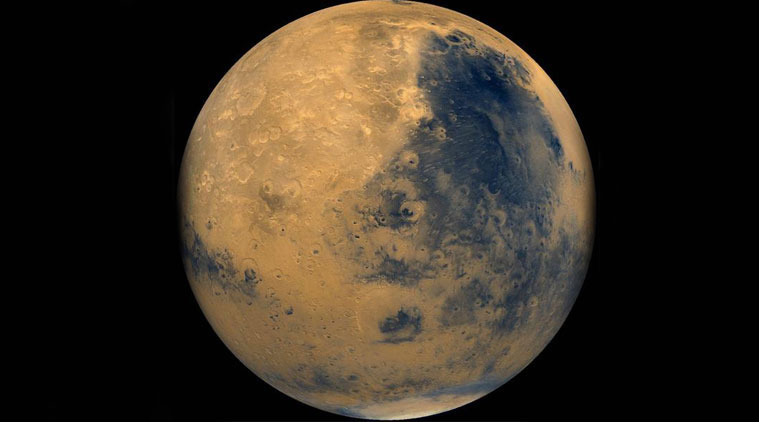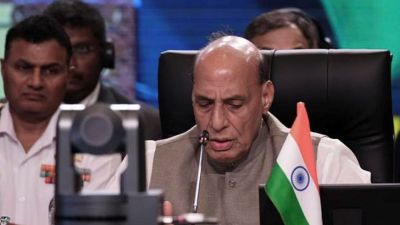Stay updated with the latest - Click here to follow us on Instagram
Mars Colour Camera has clicked over 1000 images so far: SAC director
"The MCC was developed at SAC at the cost of about Rs 10 crore and has so far clicked 1020 images. Some of these images are part of the Mars Atlas," said Tapan Misra, director of SAC while speaking to The Indian Express.
 Currently the Mars orbiter is placed in an elliptical orbit around the red planet and the camera onboard clicks pictures at different altitudes ranging from 400 to 70,000 kilometers.
Currently the Mars orbiter is placed in an elliptical orbit around the red planet and the camera onboard clicks pictures at different altitudes ranging from 400 to 70,000 kilometers.
The indigenously developed Mars Colour Camera (MCC) that has contributed heavily to the country’s first “Mars Atlas” has so far clicked over 1000 images of the Mars, ever since the Mars Orbiter began circling the red planet last year.
The Mars Atlas that was unveiled on Thursday to signify the completion of one year of Mangalyan or Mars Orbiter Mission (MOM) in the Martian atmosphere has been prepared by Ahmedabad-based Space Applications Centre (SAC) – an arm of ISRO – which contains a compilation of images clicked by the MCC and other instruments on-board the orbiter.
“The MCC was developed at SAC at the cost of about Rs 10 crore and has so far clicked 1020 images. Some of these images are part of the Mars Atlas,” said Tapan Misra, director of SAC while speaking to The Indian Express.
“The MCC which is onboard the Mars Orbiter can click eight images of Mars during one single orbit of the planet. One orbit however takes about over three days and it takes over six hours for one image to travel back to Earth,” Misra added.
Currently the Mars orbiter is placed in an elliptical orbit around the red planet and the camera onboard clicks pictures at different altitudes ranging from 400 to 70,000 kilometers.
Some of the pictures that MCC clicked and have been published in the Mars Atlas including those of Olympus Mons, the largest volcano in the solar system, which has an altitude that is nearly three times the altitude of Mount Everest, the largest peak on Earth.
When asked which of the MCC pictures he likes the most, Misra said, “It is difficult to say which child of yours is the best. But images of Valles Marineris which is a grand canyon system that runs up to a length of 4000 kilometers along the equator of Mars, the extraordinary event of the shadow of moon falling on Mars and the air glows are some of my personal favourites.”
SAC had initally selected about 200-odd images from the MCC to be accomodated in the Mars Atlas. “Not all images have been included though,” the SAC director added. The images in the Atlas also have interesting pictures of Gale Crater which is the landing site of NASA’s Curiosity rover and images of Deimos and Phobos, the two moons of Mars.
When asked if the MCC will last as long as the Mars Orbiter which is now expected to orbit Mars for “several years”, Misra said, “Like a human baby, the first three months was crucial for the camera. Now that it has survived so far, we expect it to last for 10-15 years.”
Apart from pictures of impact craters, gradational features, moons of Mars, volcanic and tectonic features, MCC has also clicked pictures of India, Sahara Desert and Red Sea during its journey to Mars. These pictures are part of the Mars Atlas.






